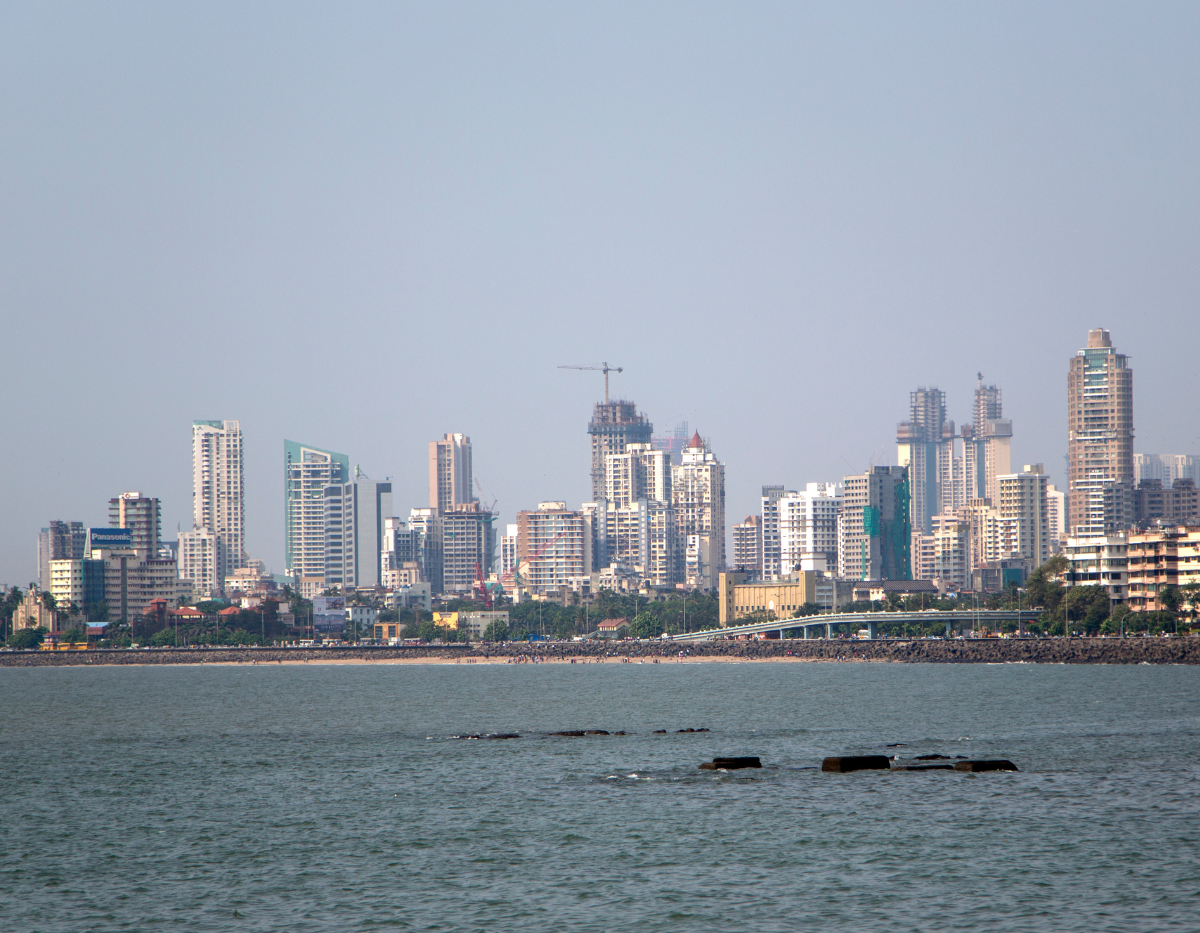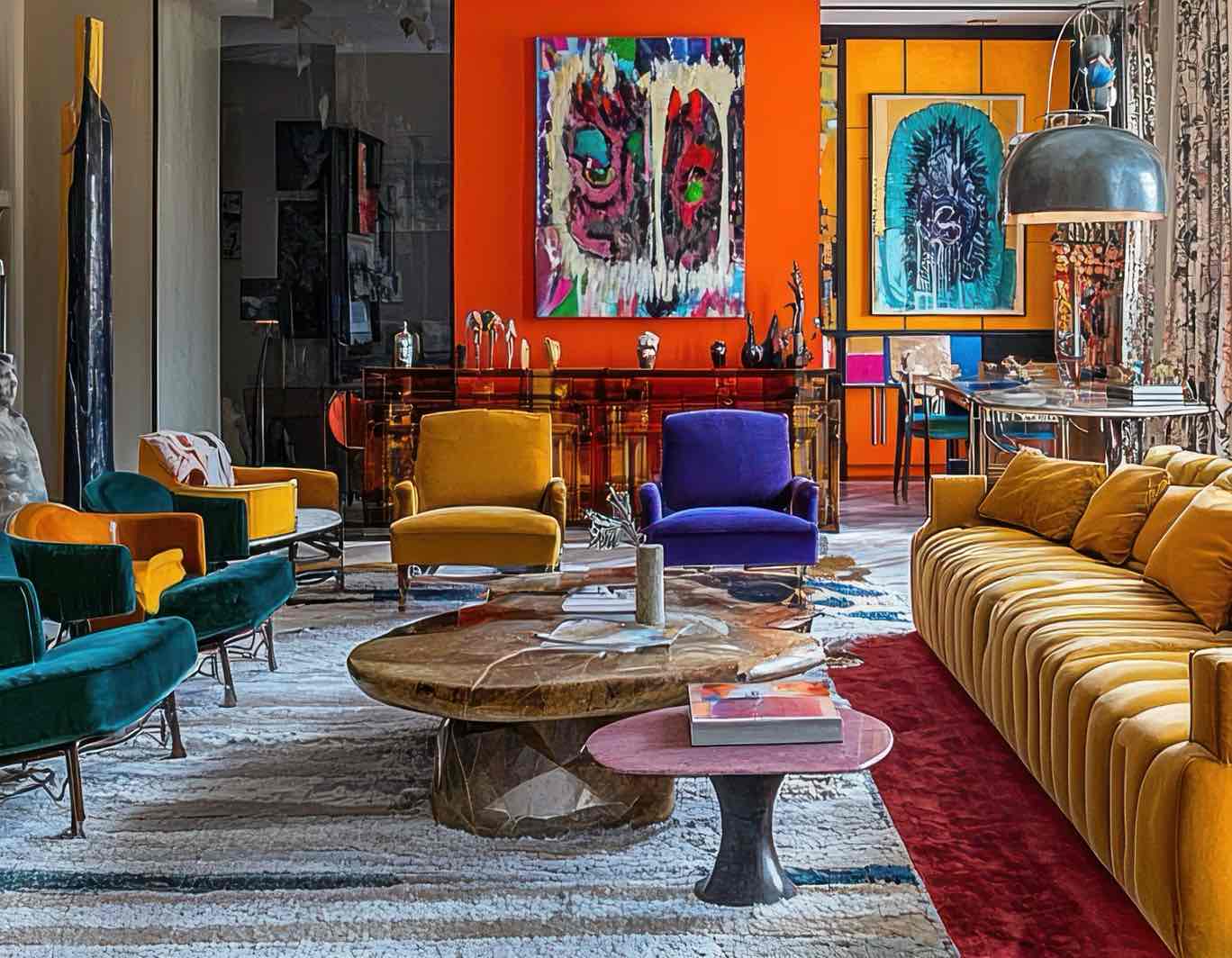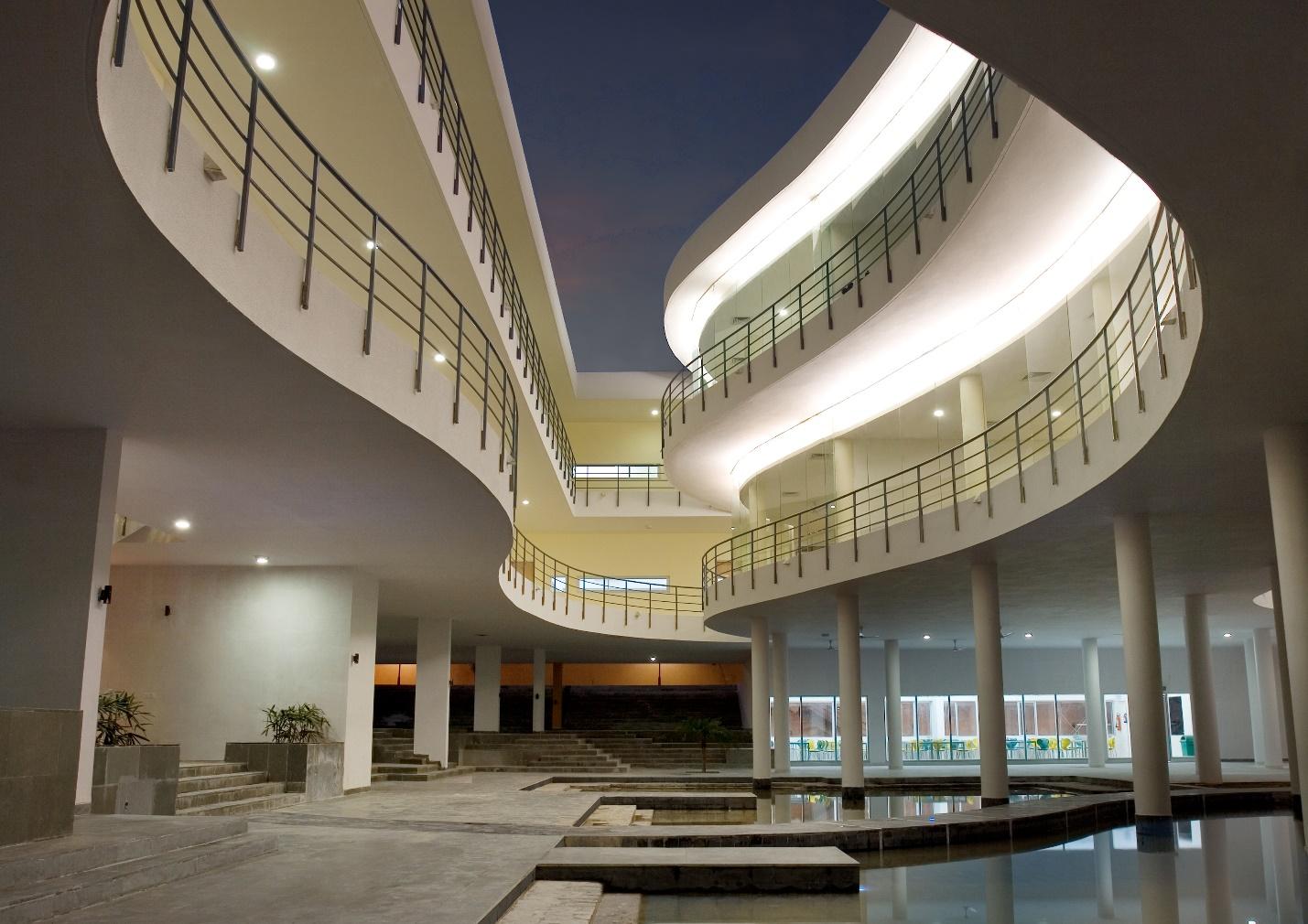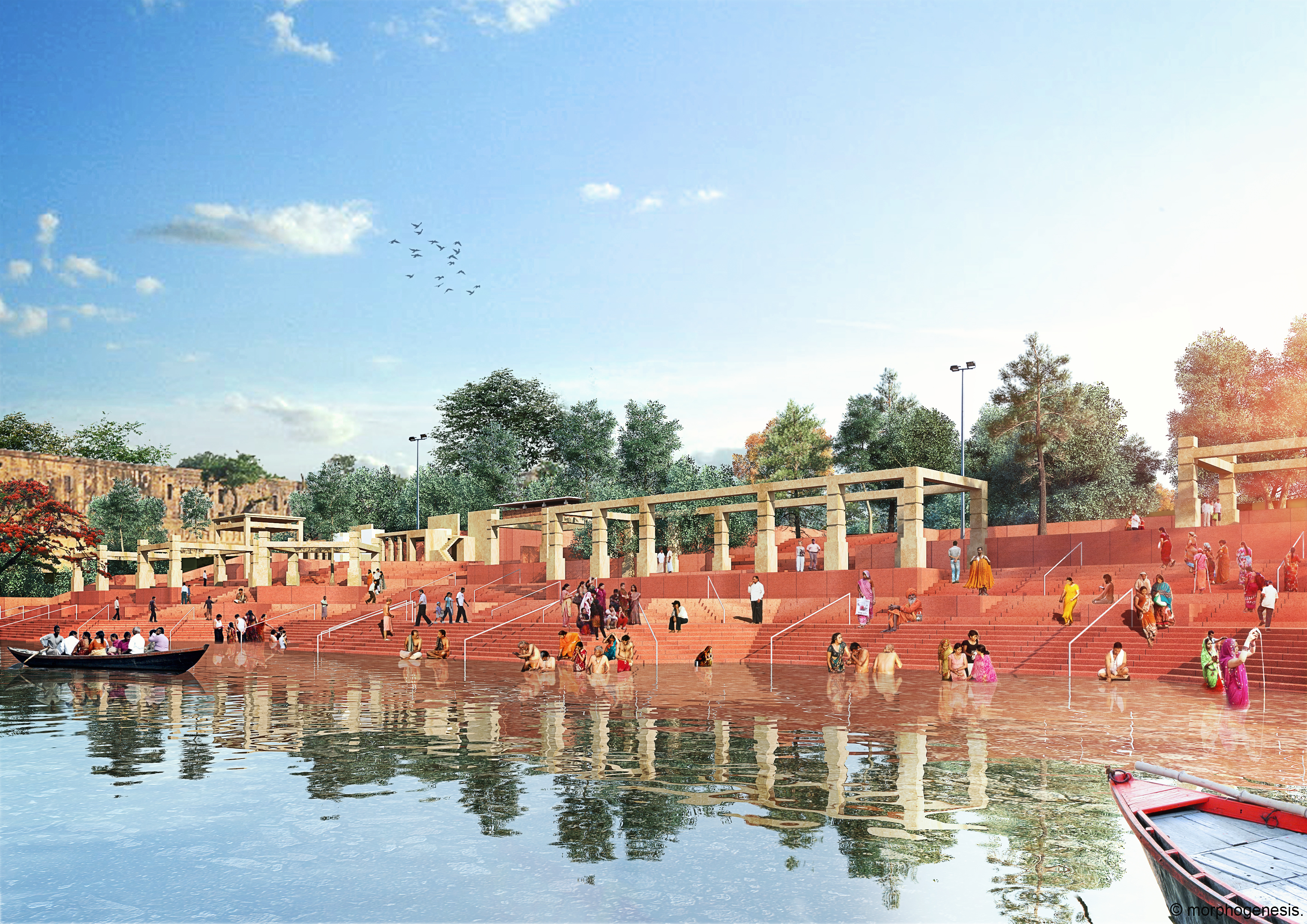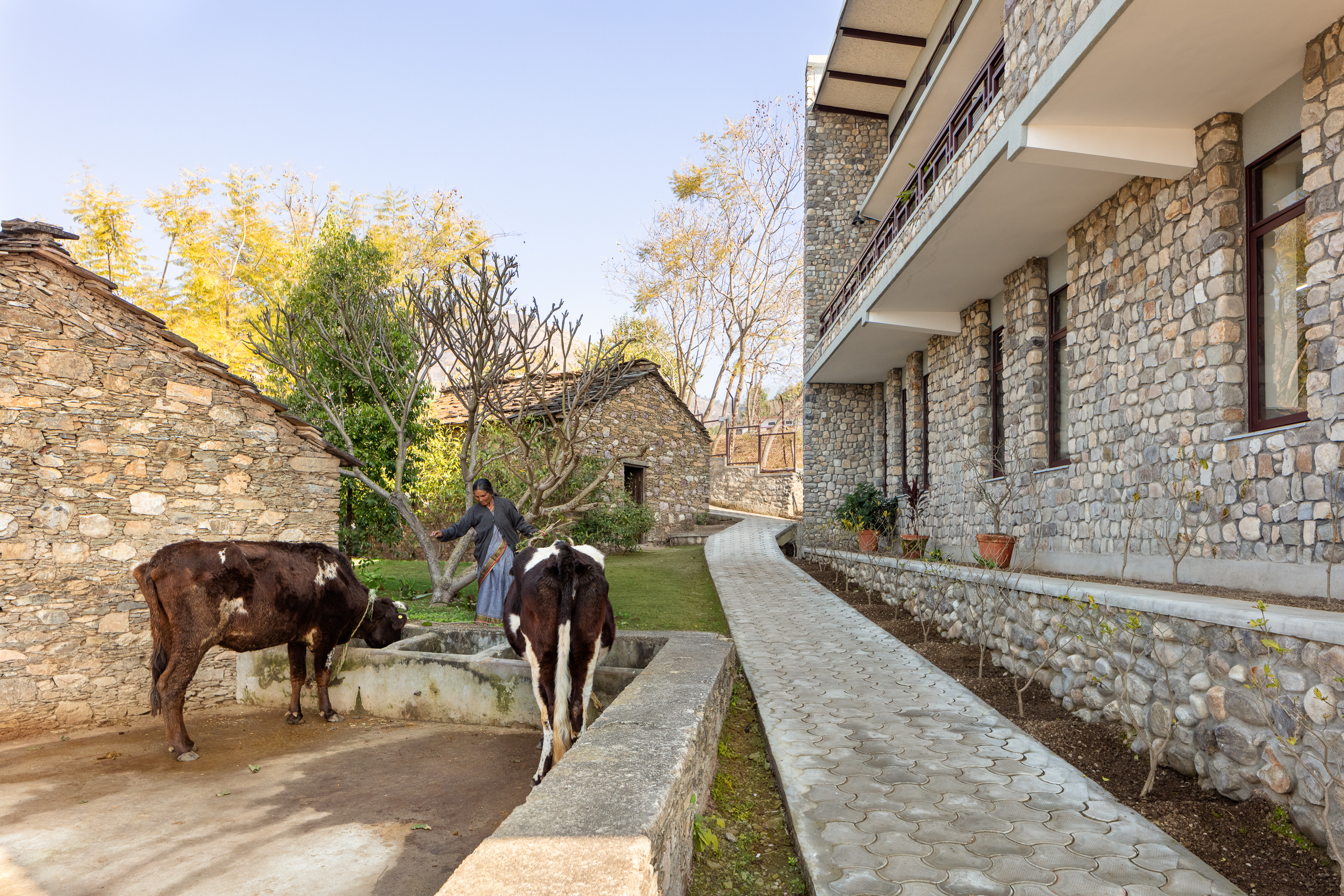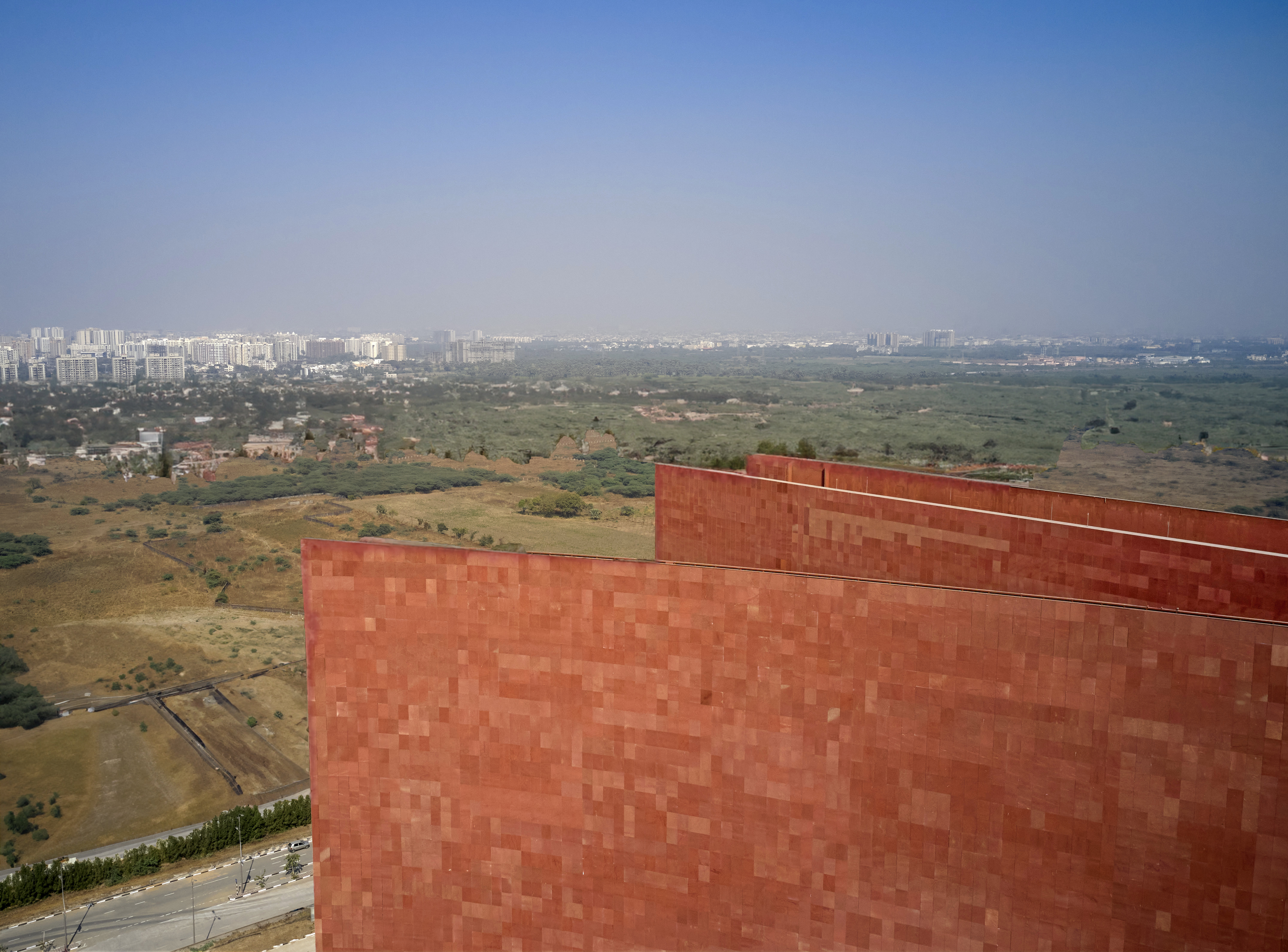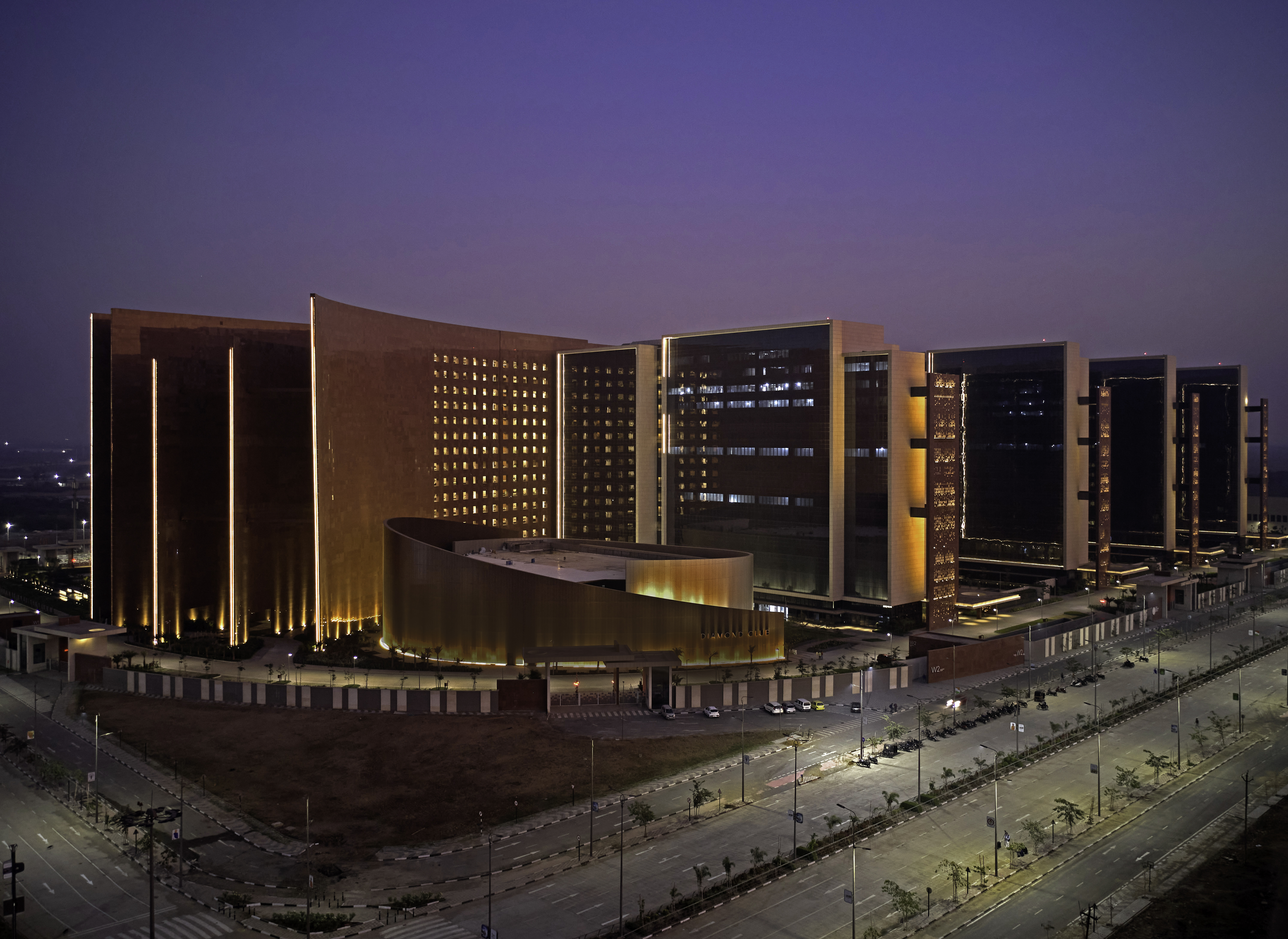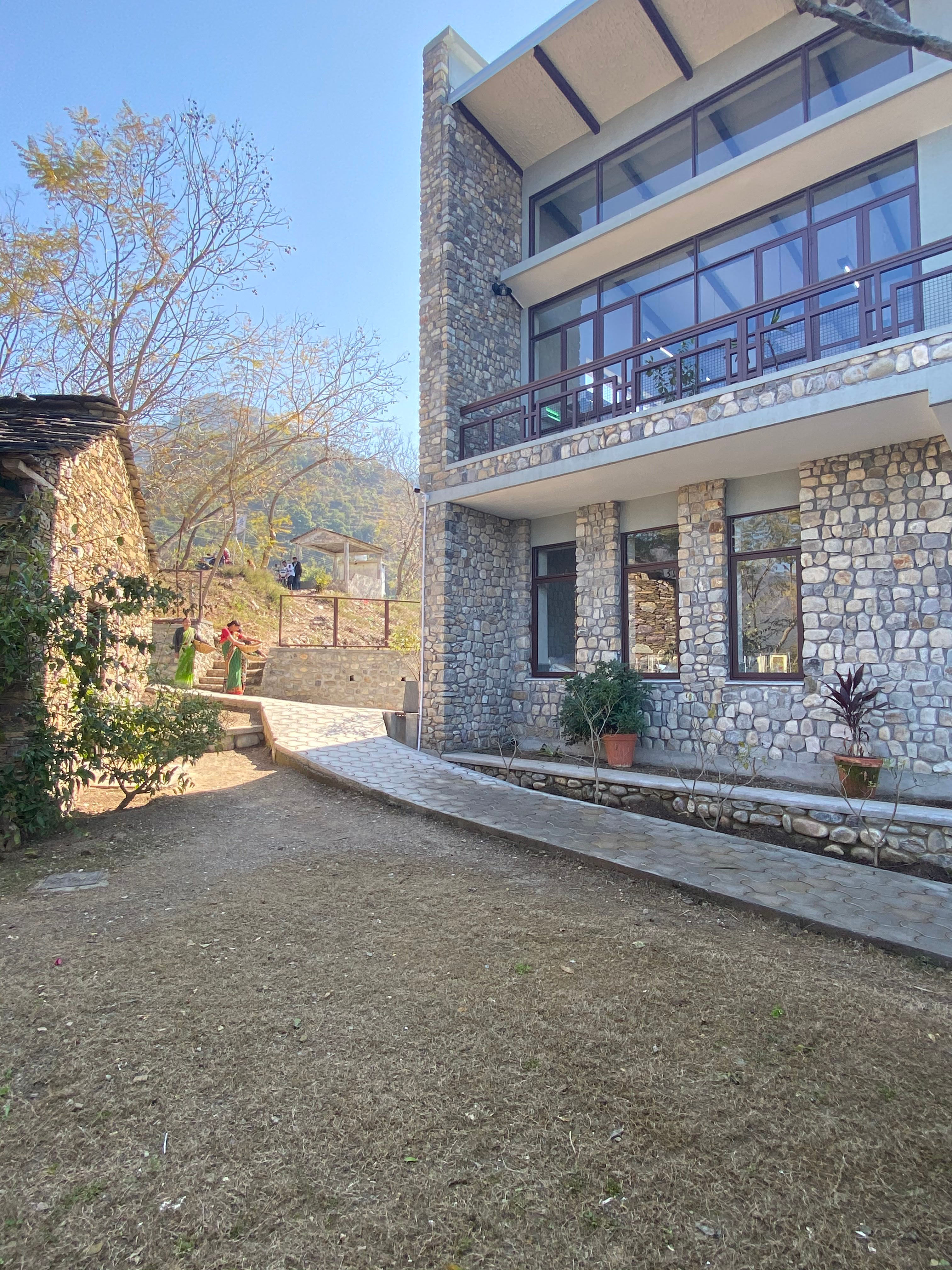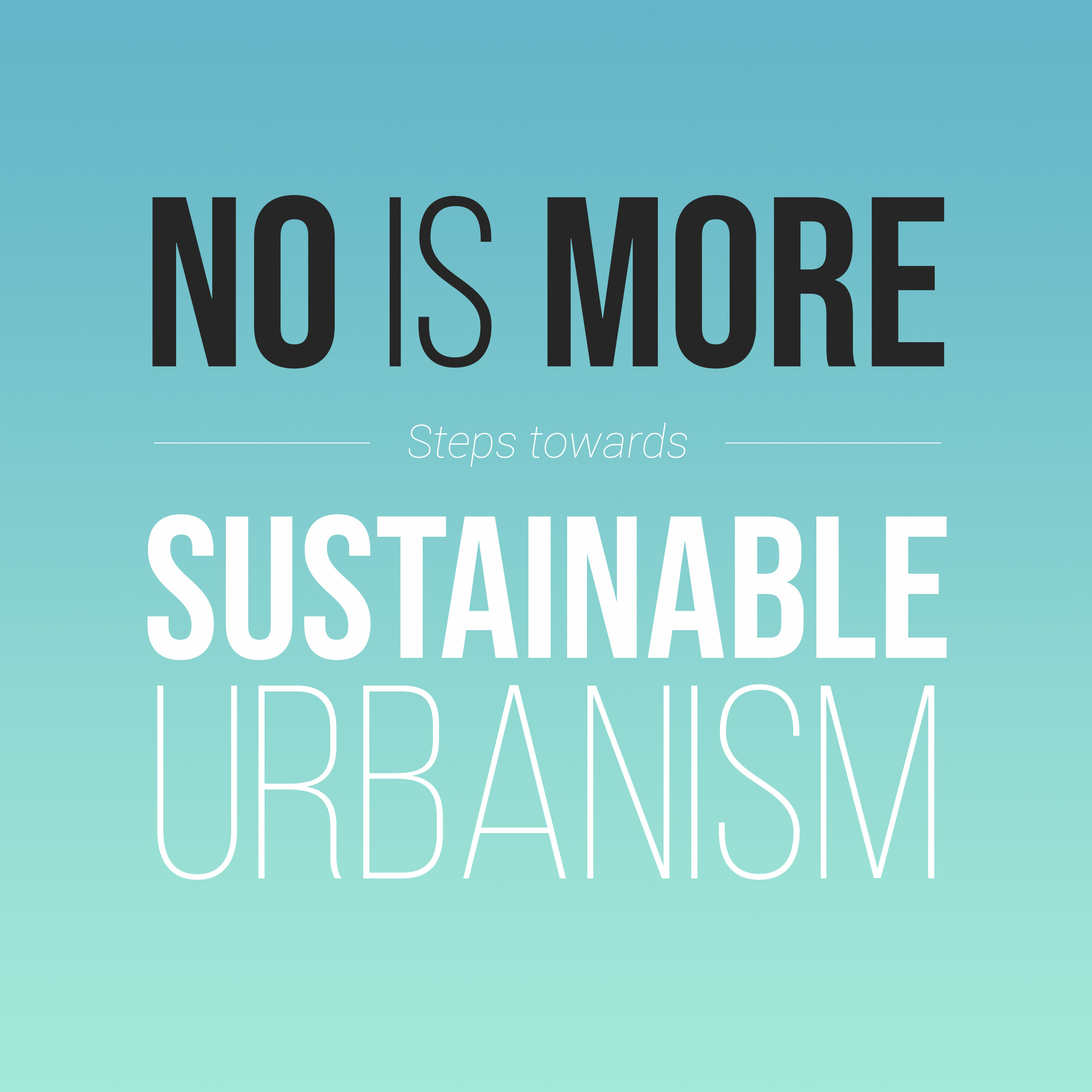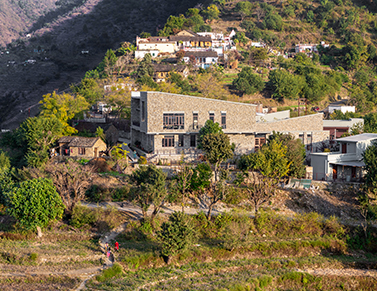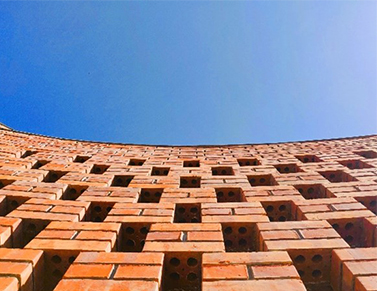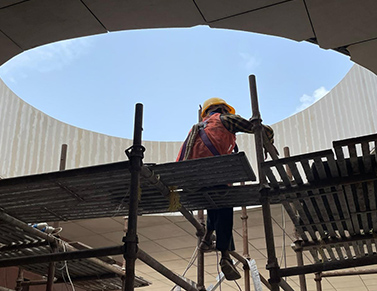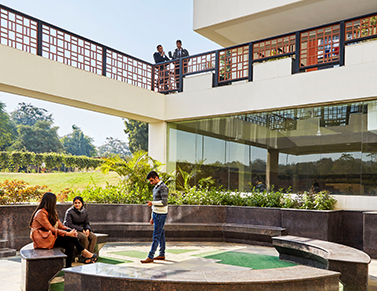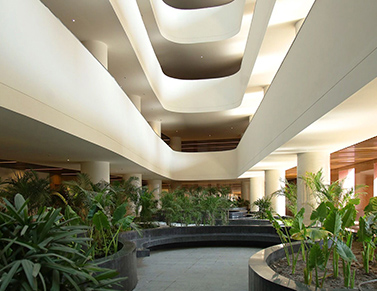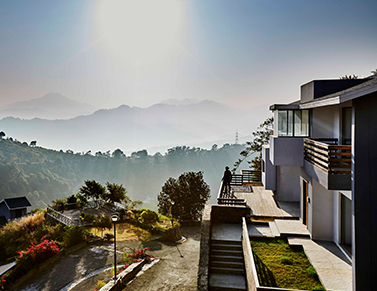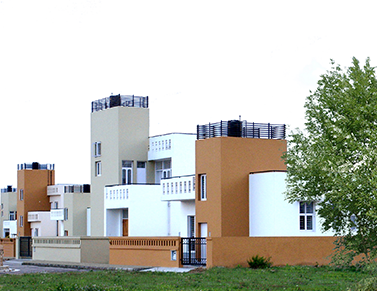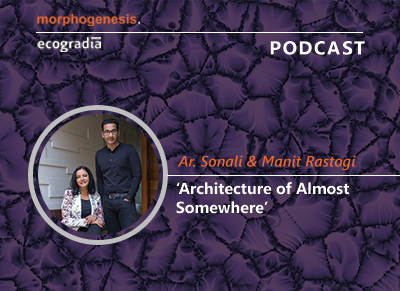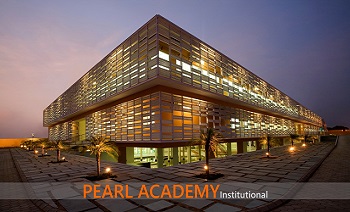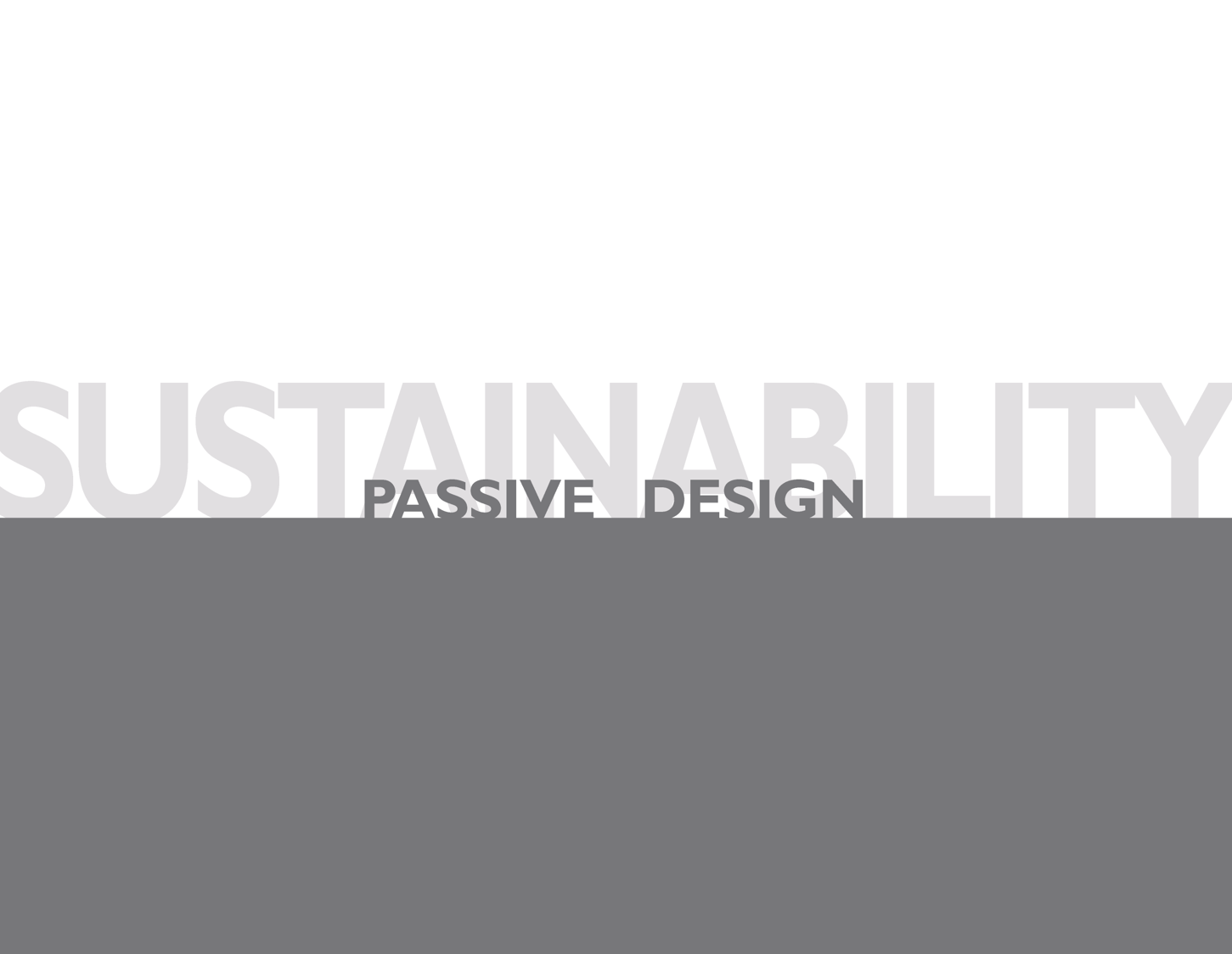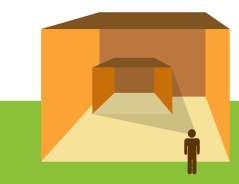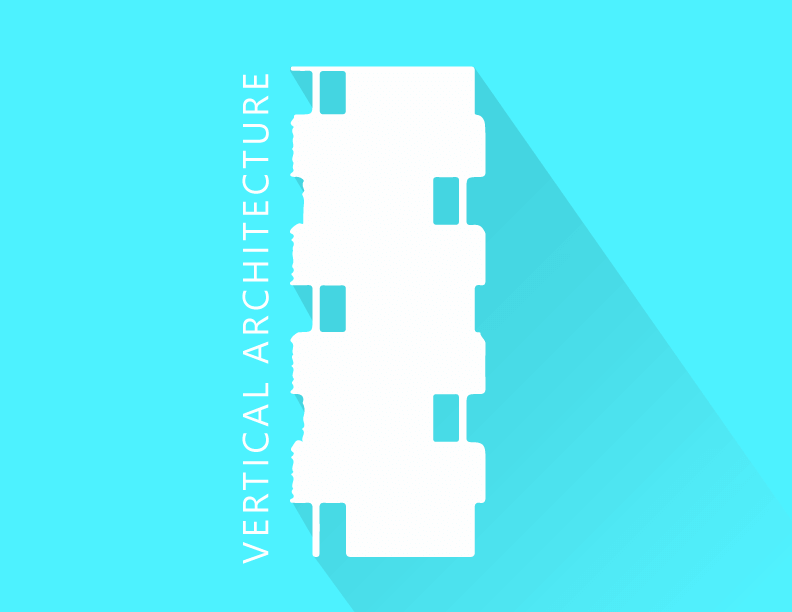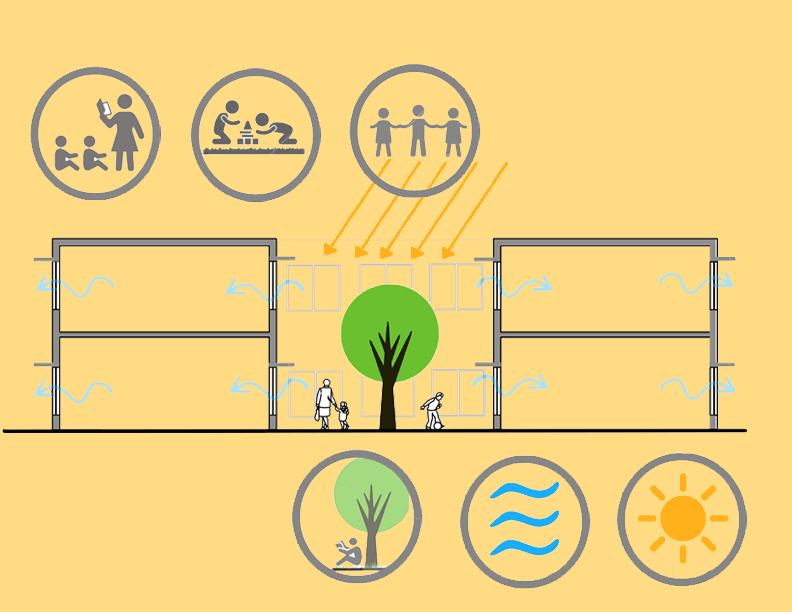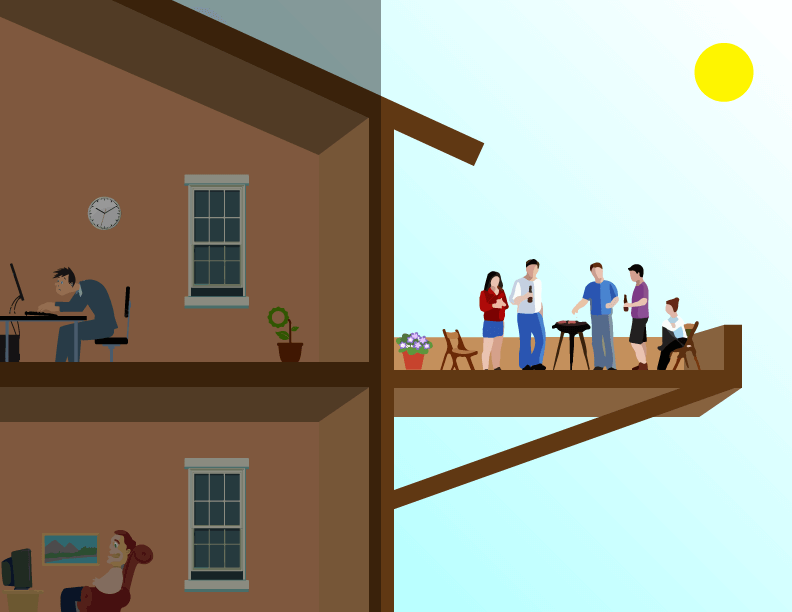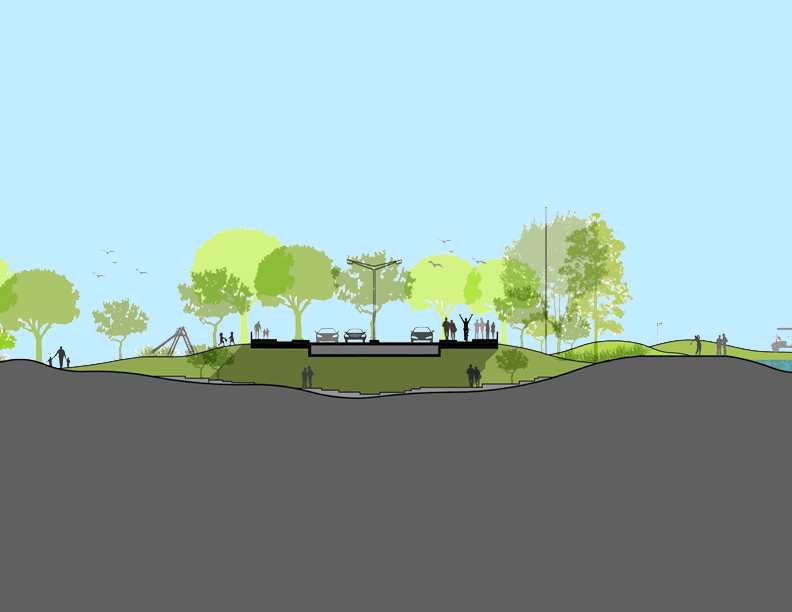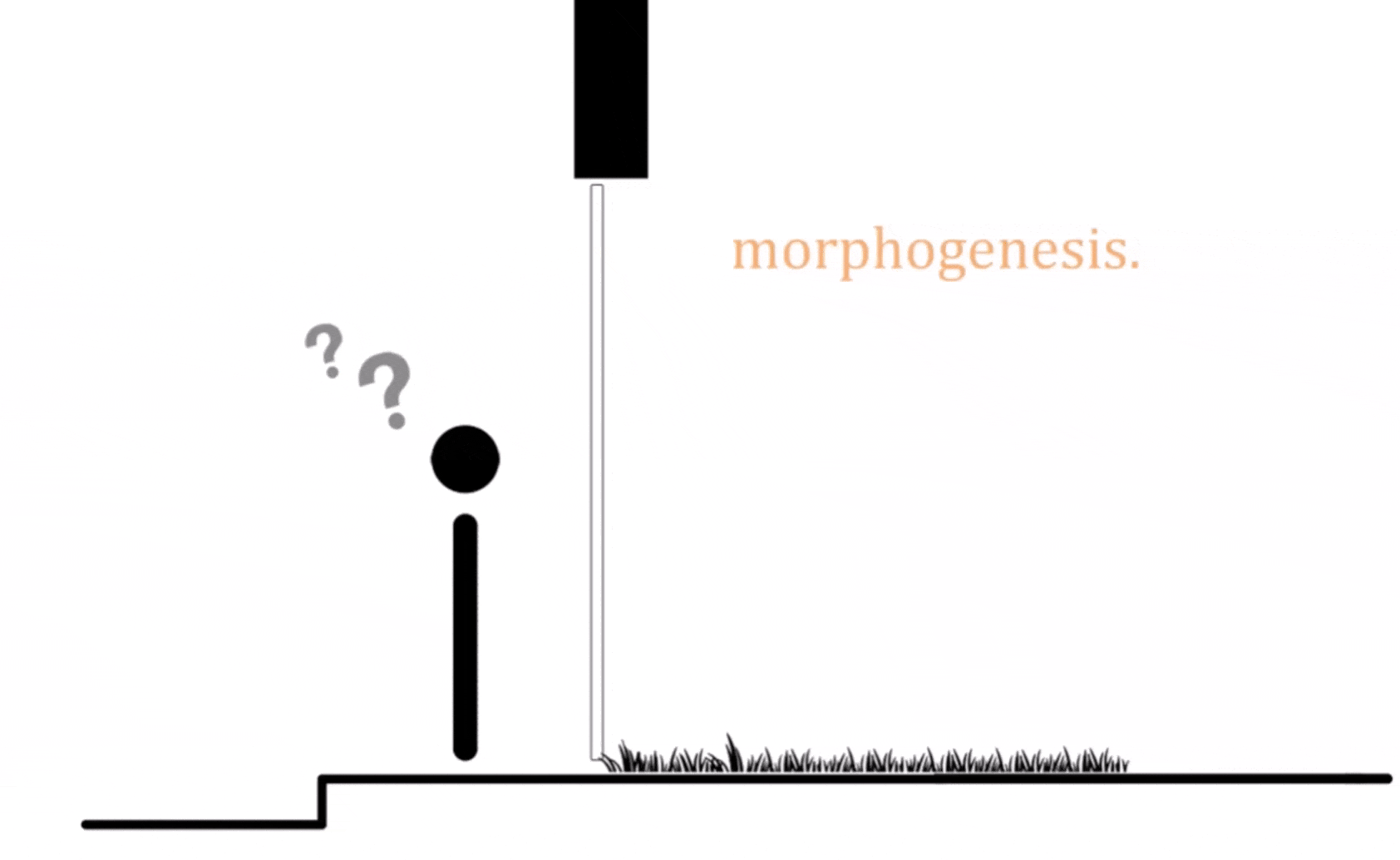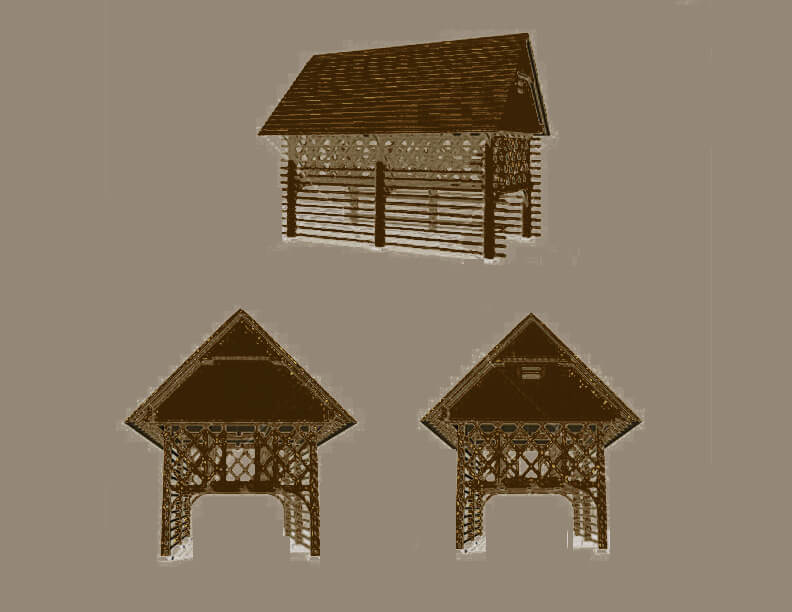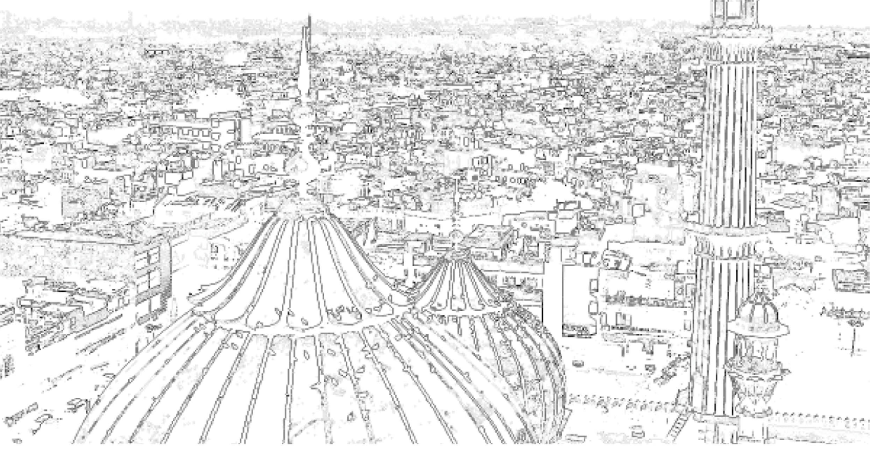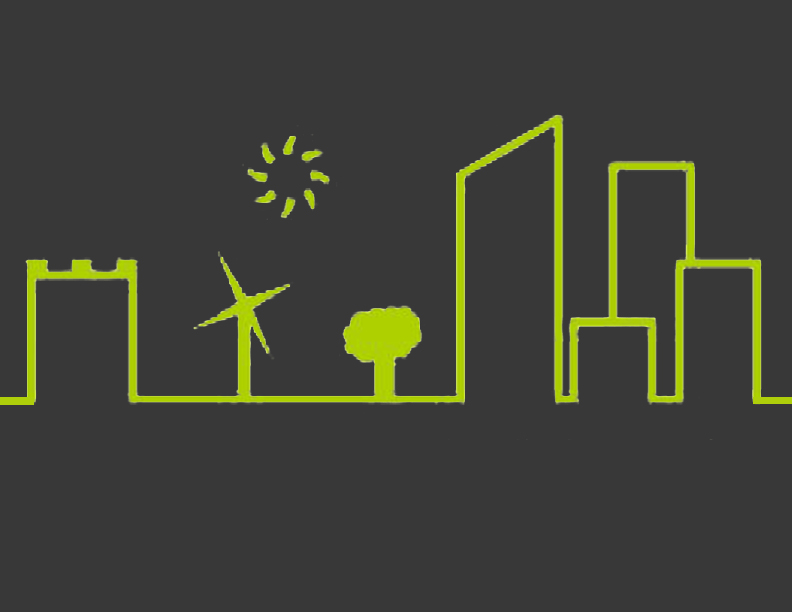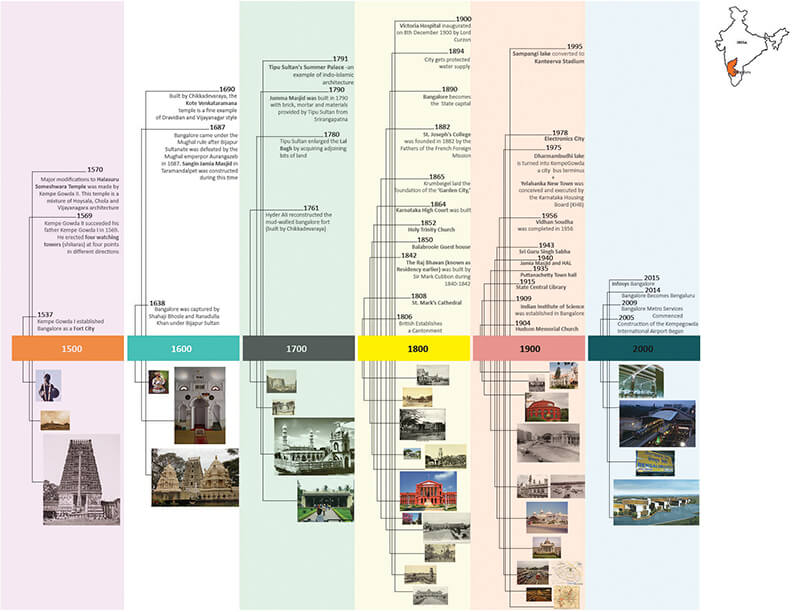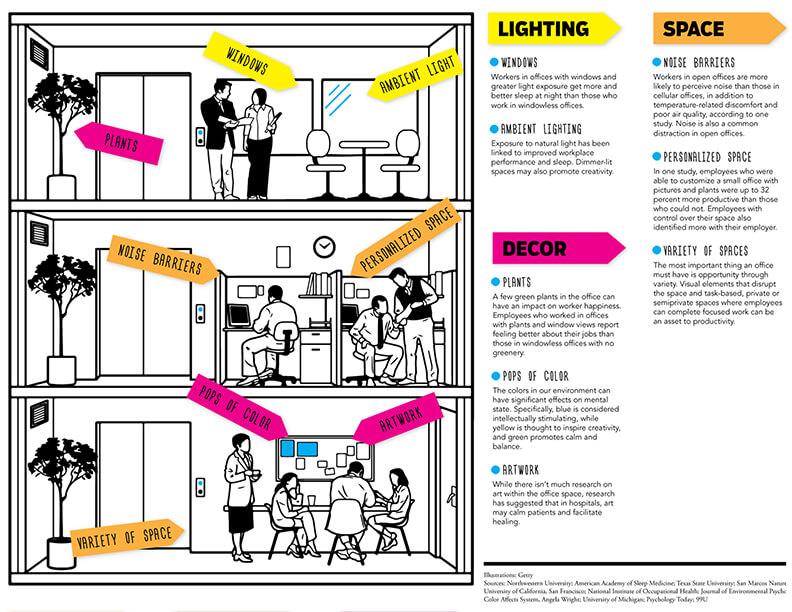Image Credit: Morphogenesis
This article delves into the transformative impact of green buildings, showcasing their economic, environmental, health, and social advantages. Discover how these sustainable structures are shaping a greener future.
In an era where climate change and environmental impact dominate global concerns, the concept of green building has emerged as a transformative solution within the construction industry. Green buildings, designed with sustainability at their core, focus on minimizing the ecological footprint of a structure from conception through its entire life cycle.
According to a reference guide published by the Indian Green Building Council (IGBC) the environmental impact of the building industry is significant. Building annually consumes more than 20% of the electricity used in India.
Unlike traditional building methods that can be resource-intensive and detrimental to the environment, green buildings aim to harmonize with the natural world, reducing carbon emissions, conserving water and energy, and enhancing indoor air quality. As we confront unprecedented environmental challenges, green building practices are gaining momentum—not merely as a trend but as a crucial commitment to a sustainable future.
By redefining how we build, green architecture is not only addressing pressing environmental issues but also creating healthier, economically viable, and socially equitable spaces for communities. With the growing recognition of its benefits, green building is becoming an essential component of modern construction.
This article delves into the multi-faceted advantages of green building, offering insights into its environmental, economic, health, and social impacts.
Table of Content:
1. What is a Green Building?
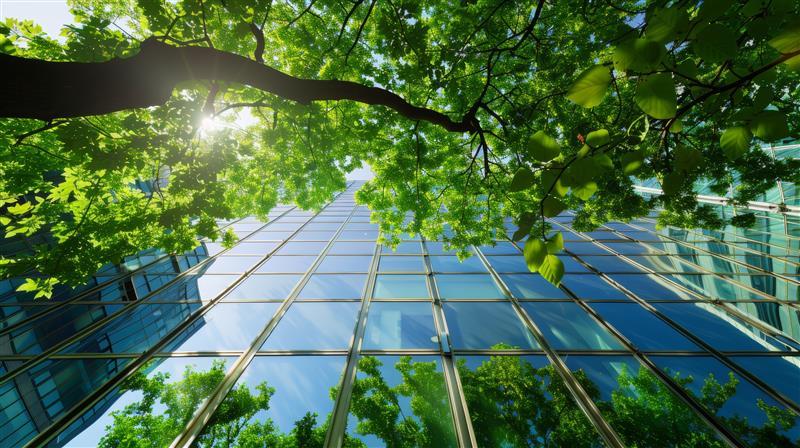
A green building is more than just an environmentally conscious structure; it’s a comprehensive approach to construction that emphasizes sustainability, efficiency, and health. Rooted in the principles of reducing environmental impact and enhancing the quality of life for its occupants, green building redefines how we interact with the built environment. This concept goes beyond the mere physical structure, encompassing the entire building life cycle—from design, materials, and construction techniques to operation, maintenance, and even deconstruction.
The principles of green building are fundamentally aligned with sustainable practices. For instance, energy efficiency is a cornerstone of green architecture, aiming to reduce reliance on nonrenewable resources. Water conservation is similarly prioritized, with the goal of managing water use and encouraging systems like rainwater harvesting and greywater recycling. Another essential principle is improving indoor air quality. By selecting low-emission materials and incorporating natural ventilation, green buildings ensure a healthier, more comfortable indoor environment for occupants.
Green buildings also embody sustainable construction practices. Materials are often locally sourced, recyclable, or renewable to minimize their environmental footprint. Construction techniques may include waste management protocols to reduce and recycle onsite waste, and design considerations often incorporate renewable energy sources, such as solar panels or wind turbines. Furthermore, green architecture recognizes the importance of lifecycle thinking—considering how a building can continue to benefit the environment and society throughout its existence and even when it reaches the end of its usable life.
Ultimately, a green building is a forward-thinking structure that represents our collective responsibility to preserve resources and prioritize human health, setting a standard that aims to shape the future of the construction industry.
2. The Principles of Green Building
Green building is based on a set of guiding principles aimed at creating more sustainable, efficient, and healthy spaces for both people and the environment. These principles address key aspects of building design, construction, and operation that contribute to reduced environmental impact, improved health outcomes, and long-term cost savings. Below are the core principles of green building:
a. Energy Efficiency
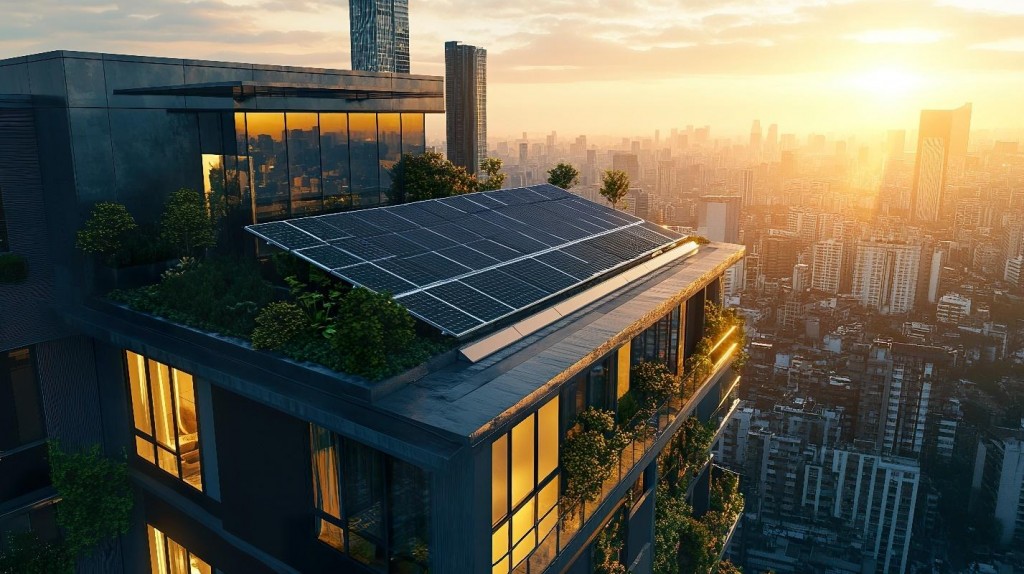
Energy efficiency is one of the most crucial principles of green building, as buildings are major consumers of energy. Implementing energy-efficient design and technologies helps reduce the overall demand for energy, minimize greenhouse gas emissions, and lower operational costs. Key strategies include:
- Optimizing building insulation to reduce heating and cooling energy requirements.
- Using energy-efficient lighting and appliances, such as LED lights and Energy Star-rated equipment, to lower electricity consumption.
- Incorporating renewable energy sources like solar panels or wind turbines to generate clean energy on-site.
- Smart building systems that adjust lighting, heating, cooling, and other energy-consuming functions based on occupancy and weather conditions.
By reducing energy consumption, green buildings not only help fight climate change but also save building owners and tenants substantial amounts in energy bills over time.
b. Water Conservation
Water conservation is an essential principle, as buildings are significant contributors to water usage. Green buildings incorporate strategies to reduce water consumption, promote water reuse, and protect water resources. Some of the most effective water conservation techniques include:
- Low flow plumbing fixtures, such as faucets, showerheads, and toilets, that use less water without compromising performance.
- Rainwater harvesting systems that capture and store rainwater for use in irrigation, landscaping, and even non-potable indoor uses.
- Greywater recycling, which involves reusing water from sinks, showers, and laundry for purposes like irrigation.
- Efficient landscaping that uses drought-tolerant plants and reduces the need for water-intensive turf grass.
By minimizing water use, green buildings contribute to the preservation of this vital resource, reduce utility costs, and support the sustainable management of local water supplies.
c. Improving Indoor Air Quality
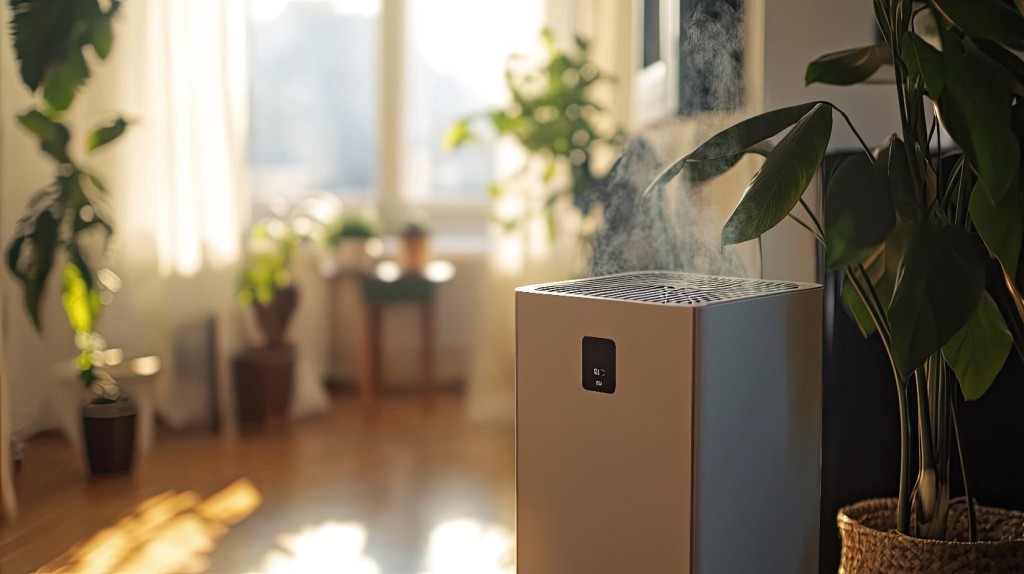
Indoor air quality (IAQ) plays a significant role in the health and well-being of building occupants. Poor air quality can lead to various health issues, including respiratory problems, allergies, and fatigue. Green buildings prioritize the use of materials, systems, and designs that enhance indoor air quality. Key strategies include:
- Ventilation systems: They provide adequate fresh air and help reduce the accumulation of indoor pollutants.
- Use of low-VOC (volatile organic compound) materials such as paints, adhesives, and flooring, which release fewer harmful chemicals into the air.
- Air filtration systems that remove airborne contaminants, such as dust, mold spores, and allergens, from the indoor environment.
- Natural ventilation: It leverages windows, vents, and the building’s orientation to allow for the free flow of fresh air.
Green buildings that prioritize indoor air quality contribute to healthier, more comfortable environments for occupants, reducing sick days, improving productivity, and promoting overall well-being.
Learn more: The Morphogenesis approach to sustainable architecture
Morphogenesis’ Projects in Focus
Morphogenesis, a leader in sustainable architecture, is known for its commitment to integrating environmental responsibility within each of its projects. With a deep-rooted focus on energy efficiency, water conservation, and social sustainability, Morphogenesis applies innovative design principles to create spaces that are not only functional but also environmentally conscious and culturally meaningful. The firm’s approach to green building is reflected in its use of local resources, low-impact construction techniques, and passive climate control measures. Each project is meticulously planned to minimize environmental impact, enhance occupant well-being, and contribute positively to the local community and ecosystem.
a. Morphogenesis 41
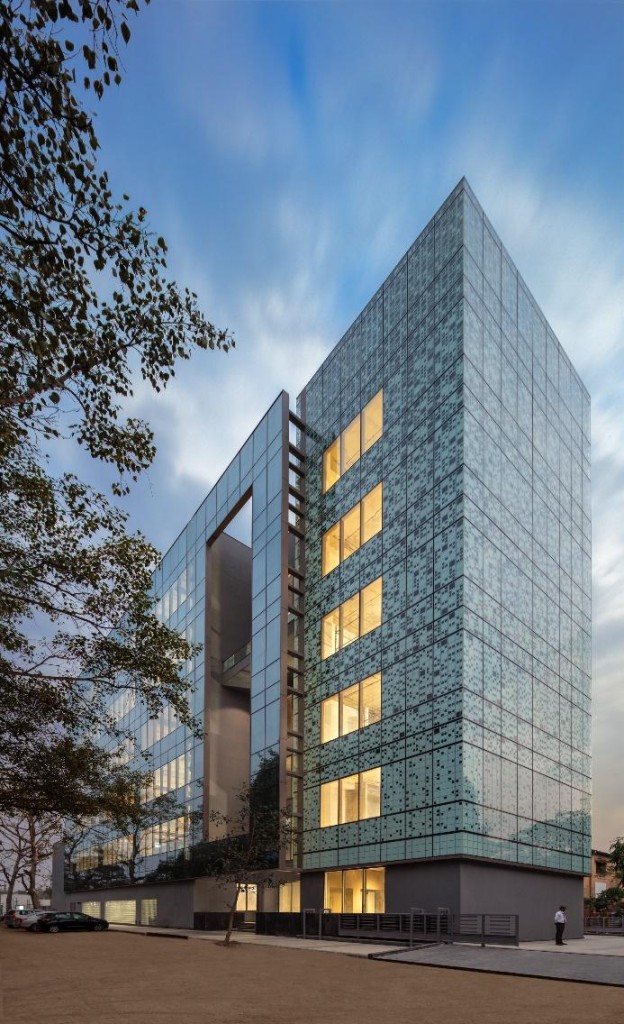
Image Courtesy: Morphogenesis
Morphogenesis 41 stands as Delhi’s first USGBC LEED Platinum commercial office building, setting new standards in sustainable design. This G+5 structure, with its two basements, is thoughtfully engineered to maximize energy and water efficiency while fostering a healthier workspace.
Efficiency in Energy Use and Building Design The building’s orientation and massing minimize heat gain by placing service areas to the east and west, while productive spaces benefit from natural daylight, allowing for an energy-saving “blinds-free” workspace. The building envelope integrates AAC blockwork with insulated roofing, paired with a VRV HVAC system, advanced lighting, and solar panels, resulting in energy savings of over 25% compared to ASHRAE benchmarks.
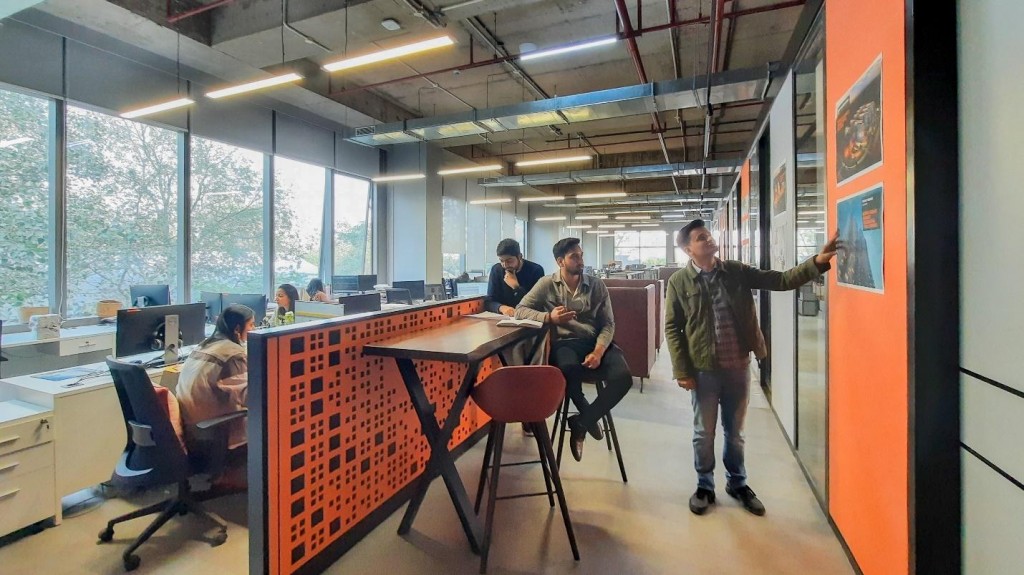
Image Courtesy: Morphogenesis
Water Conservation Measures Rainwater harvesting systems capture peak rainfall, supporting efficient landscape irrigation, while specialized plumbing fixtures reduce potable water demand by nearly half. Additionally, wastewater is recycled for non-potable uses, achieving 100% reuse for sewage conveyance and further reducing freshwater demand.
A Healthy and Sustainable Workspace Morphogenesis 41 enhances indoor air quality with increased fresh air ventilation, MERV 13 filtration, and the use of low-VOC materials, promoting wellness and productivity. High SRI paints on rooftops and eco-friendly cleaning practices further contribute to a clean, sustainable interior environment.
Materials and Site Selection With a focus on local and recycled materials, the project reduces resource depletion and transportation emissions. Landscaped areas incorporate native plant species, while proximity to public transit encourages sustainable commuting options, underscoring the building’s commitment to reducing its environmental footprint.
Morphogenesis 41 is a model of sustainable design, creating a more efficient, eco-friendly, and socially responsible space for Delhi’s commercial landscape.
b. The British School

Image Courtesy: Randhir Singh
The British School in New Delhi exemplifies sustainable design rooted in local architectural practices, providing an environmentally conscious learning environment that harmonizes with its cultural surroundings.
Energy Efficiency Through Passive Design To minimize energy consumption, Morphogenesis prioritized passive design strategies that reduce reliance on air-conditioning. Approximately 50% of the school uses natural ventilation, achieved through verandahs, shaded courtyards, and traditional chajjas (deep overhangs). These elements not only optimize energy efficiency by reducing solar heat gain but also create shaded, comfortable spaces for student activities year-round.
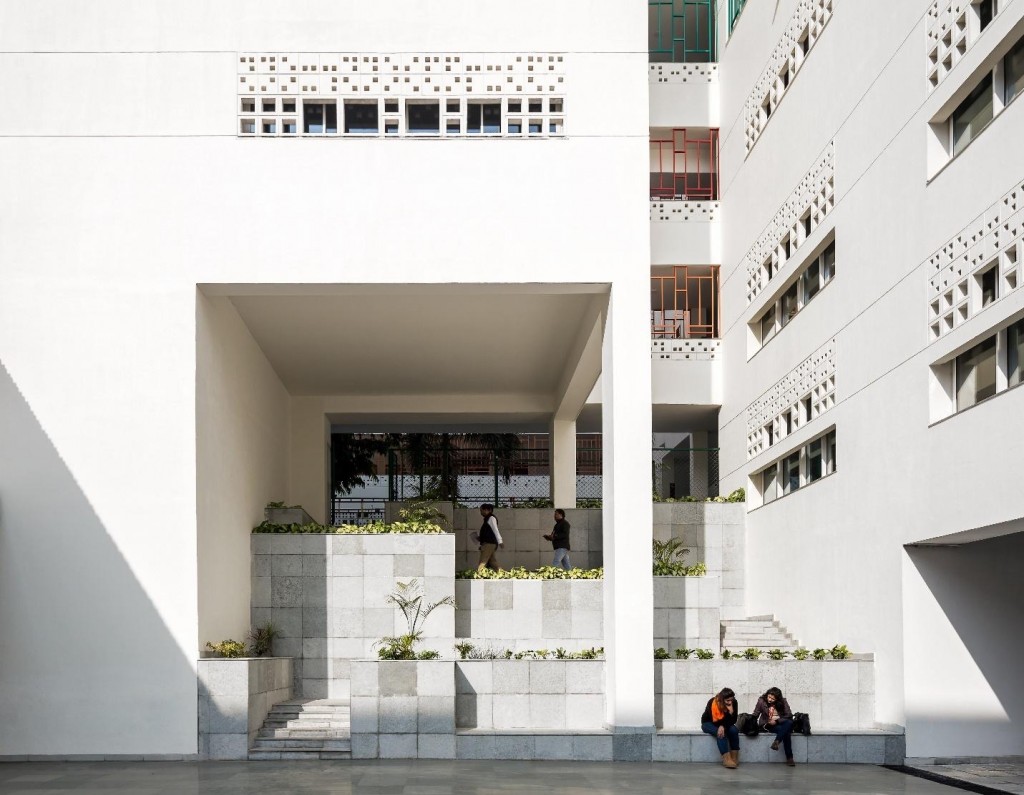
Image Courtesy: Randhir Singh
Water Conservation and Biodiversity The campus incorporates rain gardens and an efficient rainwater harvesting system, making water conservation a visible, hands-on learning experience for students. Protecting existing mature trees was a priority; many were integrated into shaded outdoor gathering spaces inspired by traditional chaupals (community spaces). The landscape design further enhances biodiversity by including native plant species and bioswales for stormwater management.
Enhanced Indoor Environmental Quality In line with sustainable principles, perforated jaali walls and modular courtyard layouts facilitate natural ventilation and daylighting, fostering an indoor environment that promotes wellness and reduces energy dependency. Courtyards and multipurpose breakout spaces encourage collaborative learning and social cohesion, supported by filtered fresh air for a healthier atmosphere.
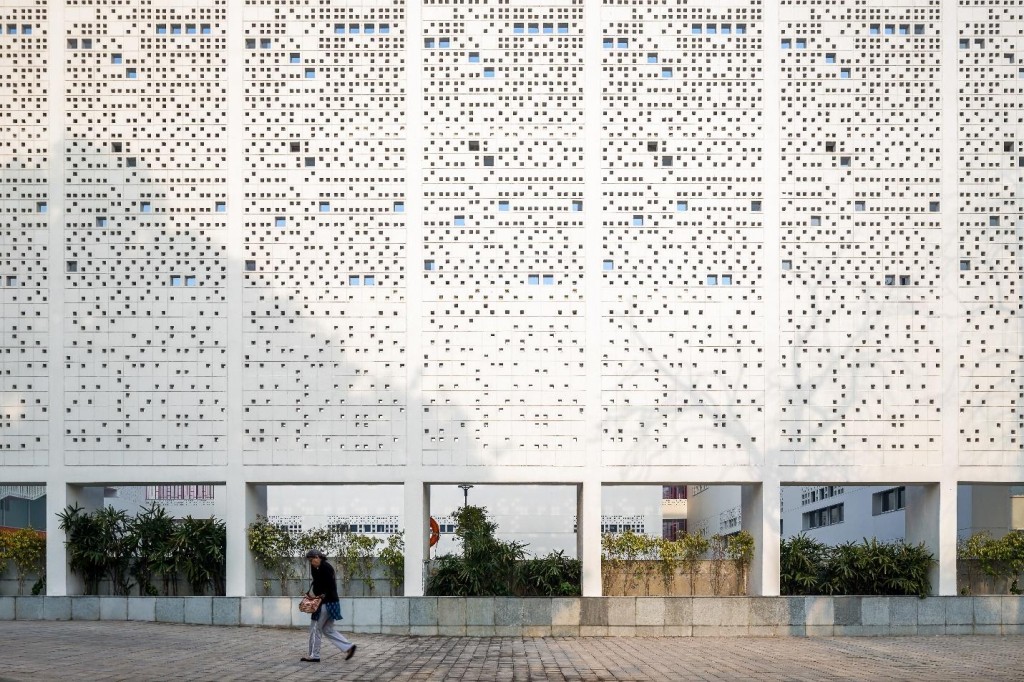
Image Courtesy: Jatinder Marwaha
Sustainable Material Use and Community Engagement Local and sustainable materials, including regional jaalis and fly ash-based construction components, reduce the environmental impact of transportation and construction. The project’s commitment to sustainability extends to its community, with active student participation in landscape management and tree transplantation, enhancing the socio-cultural experience for students.
3. Economic Benefits of Green Building
Investing in green building practices not only contributes to environmental sustainability but also delivers substantial economic advantages. While the initial costs of constructing or retrofitting a green building may be higher compared to traditional methods, the long-term financial benefits often outweigh these upfront expenses. This section explores the economic incentives behind green building, including reduced operating costs, increased asset value, higher occupancy rates, and significant job creation within the green building sector.
a. Initial Investment vs. Long-Term Savings
One of the primary economic benefits of green building lies in the balance between initial investment and long-term savings. Although green buildings may require a higher upfront investment due to the use of sustainable materials and advanced technologies, these costs are mitigated over time through various savings.
b. Reduced Operating Costs and Maintenance
Green buildings are designed to be highly energy and water-efficient, which directly translates to lower utility bills. Features such as high-quality insulation, energy-efficient windows, LED lighting, and renewable energy sources like solar panels significantly reduce the consumption of non-renewable resources. For instance, LEED-certified buildings have been shown to consume up to 25% less energy and 11% less water compared to conventional buildings (USGBC).
In addition to energy and water savings, green buildings often incur lower maintenance costs. Sustainable materials used in construction, such as recycled steel and low-VOC paints, tend to be more durable and require less frequent repairs or replacements. Studies have reported that LEED buildings experience almost 20% lower maintenance costs than typical commercial buildings, providing substantial savings over the building’s lifespan.
c. Increased Asset Value and Occupancy Rates
Green buildings also offer enhanced asset value. Properties constructed or retrofitted to green standards often see a significant increase in market value. For example, homes built to LEED standards in the Austin-Round Rock Metropolitan Statistical Area experienced an eight percent boost in value between 2008 and 2016, while homes adhering to a broader range of green standards saw a six percent increase (University of Texas at Austin).
Moreover, green buildings tend to attract higher occupancy rates and command premium rents. A report from the Los Angeles market indicated that while traditional (non-LEED certified) buildings received an average of $2.16 per square foot, tenants were willing to pay $2.91 per square foot for LEED-certified spaces. This premium is attributed to the superior quality, lower operating costs, and enhanced working or living environments that green buildings provide, making them more attractive to potential tenants and buyers.
d. Job Creation in the Green Building Sector
The growth of the green building industry has also led to significant job creation, contributing positively to the economy. As demand for sustainable construction practices increases, so does the need for skilled professionals in various roles, including architects, engineers, construction workers, and sustainability consultants.
Green building projects require specialized knowledge and expertise, fostering the development of new job opportunities. From the design phase, which involves incorporating energy-efficient systems and sustainable materials, to the construction and maintenance phases, green building practices create a diverse range of employment opportunities. According to the Canada Green Building Council (CAGBC), green building jobs outnumber those in Canada’s forestry, oil and gas extraction, and mining sectors combined. By 2030, it is projected that green building could account for 1.5 million direct jobs and contribute $150 billion to the Gross Domestic Product (GDP) (CAGBC).
Furthermore, the green building sector supports economic growth by attracting investments and fostering innovation. Companies that adopt green building practices often experience increased competitiveness and profitability, driving further investment into sustainable technologies and materials. This not only benefits individual businesses but also stimulates the broader economy by creating a ripple effect of job creation and economic development.
4. Environmental Benefits of Green Building
Green buildings have become pivotal in our efforts to create a sustainable future, especially in light of the built environment’s substantial environmental impact. Let’s look at the environmental benefits in a straightforward but impactful way.
a. Reduction of Carbon Emissions and Energy Consumption
According to the Environmental and Energy Study Institute (EESI), buildings are responsible for almost 40% of global carbon emissions in countries like the USA. Green buildings, especially those certified by standards such as LEED, incorporate energy-efficient systems, renewable energy sources like solar panels, and high-performance lighting and appliances. These measures drastically reduce a building’s carbon footprint over its entire lifecycle. From better insulation to smart HVAC systems, green buildings lower dependency on energy, leading to fewer greenhouse gases and a healthier planet.
b. Decrease in Water Usage and Conservation of Natural Resources
With water scarcity being a growing global concern, green buildings take proactive steps to reduce and reuse water. Through efficient plumbing, rainwater harvesting, and greywater recycling, these buildings minimize water consumption and ease the pressure on local water sources. Additionally, they often make use of sustainably-sourced, low-impact materials, meaning fewer resources are extracted from the environment, supporting conservation efforts on a larger scale.
c. Waste Reduction and Recycling During Construction and Operation
The construction industry generates an immense amount of waste each year, much of which ends up in landfills. Green building practices address this issue by promoting waste reduction during both construction and operation. Careful planning, the use of recyclable and locally-sourced materials, and waste diversion strategies are employed to minimize waste. By prioritizing recycled materials and materials that can be repurposed, green buildings aim to keep waste out of landfills and contribute to a circular economy.
d. Positive Impacts on Ecosystems and Biodiversity
Green buildings are designed with their surroundings in mind, aiming to coexist harmoniously with the natural world. By reducing pollutants, conserving water, and decreasing overall resource consumption, they help protect nearby ecosystems and support biodiversity. These buildings often include features like green roofs, native landscaping, and rain gardens that provide habitats for local wildlife. In short, they create environments that not only accommodate human life but enhance natural habitats as well, preserving ecosystems for future generations.
In adopting green building practices, we move towards a built environment that serves both human and environmental health. These benefits are part of a larger commitment to designing spaces that meet current needs without compromising the well-being of the planet.
5. Health Benefits of Green Building
Green buildings prioritize the well-being of their occupants, incorporating design and material choices that create healthier, more comfortable indoor environments. Here’s how green buildings enhance health in measurable, impactful ways.
a. Improved Indoor Air Quality and Its Effects on Occupant Health
Indoor air quality (IAQ) is critical to occupant health, especially given that people spend approximately 90% of their time indoors. Green buildings use low-VOC (volatile organic compound) materials, effective ventilation systems, and air filtration to reduce indoor pollutants, ensuring cleaner air. Research shows that better air quality decreases respiratory issues, reduces asthma rates, and improves overall comfort for those inside. This focus on IAQ leads to fewer sick days, better sleep, and, ultimately, a higher quality of life.
b. Correlation Between Green Buildings and Reduced Absenteeism
Green building design has a notable impact on employee attendance, especially in workspaces. Studies reveal that occupants in green buildings experience fewer sick days compared to those in traditional buildings. Health-focused features like improved air quality, natural ventilation, and reduced exposure to harmful chemicals contribute to fewer respiratory and allergy-related illnesses. This reduction in absenteeism means businesses can rely on a healthier, more consistently present workforce, which also translates into cost savings and increased productivity.
c. Psychological Benefits of Natural Light and Outdoor Views
Access to natural light and outdoor views is a hallmark of green building design, and these elements are linked to numerous psychological benefits. Exposure to daylight regulates circadian rhythms, improving sleep quality and mood, while views of nature are known to reduce stress and mental fatigue. In workspaces, these features contribute to greater job satisfaction, better focus, and an overall sense of well-being. Green buildings often incorporate large windows, skylights, and thoughtful layouts that maximize daylight and provide views of outdoor greenery or sky.
d. Statistics on Productivity Increases in Green Workspaces
Research underscores the positive impact of green building design on productivity. For example, studies conducted by Syracuse University found that employees in well-ventilated green buildings showed a 101% improvement in cognitive scores, highlighting the link between green spaces and mental performance. Additionally, better IAQ, natural light, and access to fresh air have all been shown to boost cognitive function and job satisfaction. These improvements benefit both the individual and the organization, as healthier, more focused employees are more productive and engaged with their work.
6. Social Benefits of Green Building
Green building extends beyond individual structures, offering broad social benefits that support communities and promote equity. From building resilience against climate impacts to fostering inclusivity, green building is increasingly recognized for its role in creating more sustainable and just societies.
a. Enhancing Community Resilience Against Climate-Related Impacts
Green building practices strengthen community resilience to climate-related challenges, such as extreme weather, flooding, and temperature fluctuations. By incorporating features like energy-efficient systems, durable materials, and water management strategies, green buildings are better equipped to withstand environmental stresses. Some structures are designed to be “islanded,” meaning they can remain functional during power outages—a vital asset in emergencies. These resilient buildings provide a stable foundation for communities, helping them recover more quickly and endure less disruption during adverse events.
b. Providing Equitable Access to Healthy Living Environments
Access to a healthy, safe, and comfortable living environment should be universal. Green building supports this goal by creating spaces with clean air, natural light, and reduced exposure to harmful chemicals. These design choices are crucial for all people but are particularly impactful for vulnerable populations, who may otherwise lack access to high-quality housing. Green building standards can be applied across housing types, ensuring that more people benefit from healthier, more sustainable living conditions. Programs aimed at affordable green housing bring these benefits to a wider range of community members, fostering more equitable living standards.
c. Role of Green Building in Promoting Social Justice and Inclusion
Green building can serve as a powerful tool for social justice by addressing environmental inequities. Traditionally, underserved communities bear a disproportionate burden of pollution, poor air quality, and other environmental risks. By prioritizing green practices in these areas, architects, developers, and policymakers can help mitigate these impacts and create healthier urban spaces. Moreover, the growing green economy presents new opportunities for employment and training, particularly for underrepresented groups. Investing in green building initiatives with an emphasis on diversity and inclusion can foster economic empowerment and ensure that the benefits of sustainable development reach all segments of society.
7. The Future of Green Building
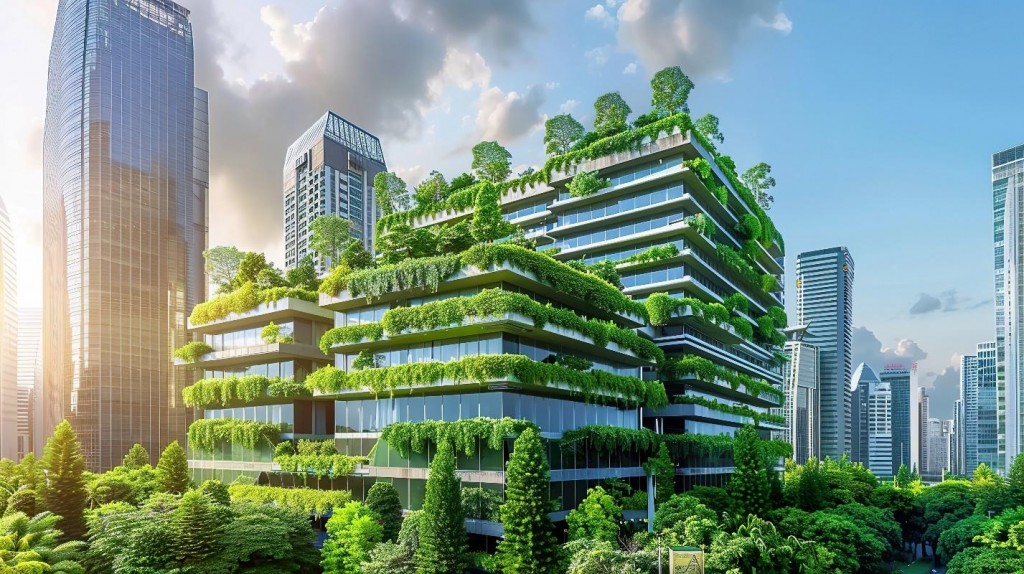
As global awareness of environmental issues grows, so does the demand for green buildings and sustainable construction practices. Green building is no longer a niche practice but is quickly becoming a mainstream approach to design, construction, and operation. This shift is not just a passing trend but a critical aspect of our efforts to mitigate climate change and promote sustainable living. The future of green building will be shaped by advancing technology, evolving industry standards, and a deeper societal commitment to sustainability.
a. Growing Demand for Green Buildings and Sustainable Practices
The demand for green buildings has seen substantial growth over the past decade, driven by both consumer awareness and the recognition of long-term cost savings. Building owners, developers, and tenants are increasingly prioritizing sustainability, recognizing its numerous environmental, health, and financial benefits. Governments and regulatory bodies are also adopting green building codes and offering incentives for sustainable construction. As industries such as real estate, hospitality, and healthcare seek to meet sustainability goals, the demand for green buildings will continue to rise.
The residential market is not far behind, as more home buyers seek eco-friendly options. Whether it’s for energy efficiency, healthier indoor air quality, or simply a desire to reduce one’s environmental footprint, green homes are becoming more popular across demographics. This rising demand is expected to drive innovation in green building technologies, from energy-efficient systems to sustainable materials and construction methods.
b. Anticipated Trends in the Construction Industry
Looking ahead, several key trends are poised to shape the future of the construction industry:
1. Integration of Smart Technology: The use of smart systems in green buildings will continue to expand, optimizing energy use, lighting, and temperature controls. Technologies such as automated building systems and sensors for monitoring energy consumption will help reduce waste and improve overall building efficiency.
2. Sustainable Materials and Circular Economy: There is a growing emphasis on sourcing renewable, recyclable, and low-impact building materials. In the coming years, we can expect to see an increased adoption of materials that are both sustainable and easily recycled at the end of their lifecycle, supporting the circular economy.
3. Net-Zero and Carbon-Neutral Buildings: With the urgency of climate action, the construction industry is moving towards net-zero buildings—structures that generate as much energy as they consume. Carbon-neutral buildings, which offset all carbon emissions from construction and operation, are expected to become more commonplace.
4. Biophilic Design: The connection between people and nature will continue to influence design trends, with more buildings incorporating natural elements such as green roofs, indoor plant life, and natural ventilation to enhance occupant well-being.
c. The Importance of Integrating Green Building Standards (e.g., LEED, TERI)
The integration of well-established green building standards like LEED (Leadership in Energy and Environmental Design) and TERI (The Energy and Resources Institute) is essential for ensuring the credibility and effectiveness of green building practices. These certification systems provide guidelines, benchmarks, and measurable outcomes that help ensure buildings meet stringent sustainability criteria. They also serve as a common language across the industry, enabling architects, developers, and other stakeholders to assess and verify the environmental performance of buildings.
The future of green building will rely heavily on the continued adoption of these standards to push the industry toward more ambitious environmental goals. By aligning new projects with established frameworks like LEED and TERI, builders can ensure their development meet global sustainability goals, reduce their carbon footprints, and create spaces that prioritize both the environment and human health.
As sustainability becomes a core value in every sector, the green building movement will continue to evolve, bringing new opportunities for innovation and collaboration. The future of green building is bright, and its continued growth will be a cornerstone of the global transition toward a more sustainable, resilient, and equitable world.
m. exploration
As we continue to explore the intersection of architecture, design, and sustainability, we invite you to delve deeper into the ideas and innovations presented on our website. Whether you’re looking for inspiring architectural projects or insightful videos, Morphogenesis serves as a hub for thought-provoking content that reflects our commitment to responsible design.
If you still have unanswered questions about architecture and interior design, consider these additional resources for further information:
- Video gallery: Discover our latest projects and design philosophies through engaging visual narratives.
- Projects: Learn about our curated selection of residential, commercial, institutional, hospitality projects that embody Morphogenesis’ copyrighted design philosophy – SOUL.
- m.blog: Dive into a wealth of knowledge with our blog, where we share insights on architecture, design trends, and sustainable practices.






